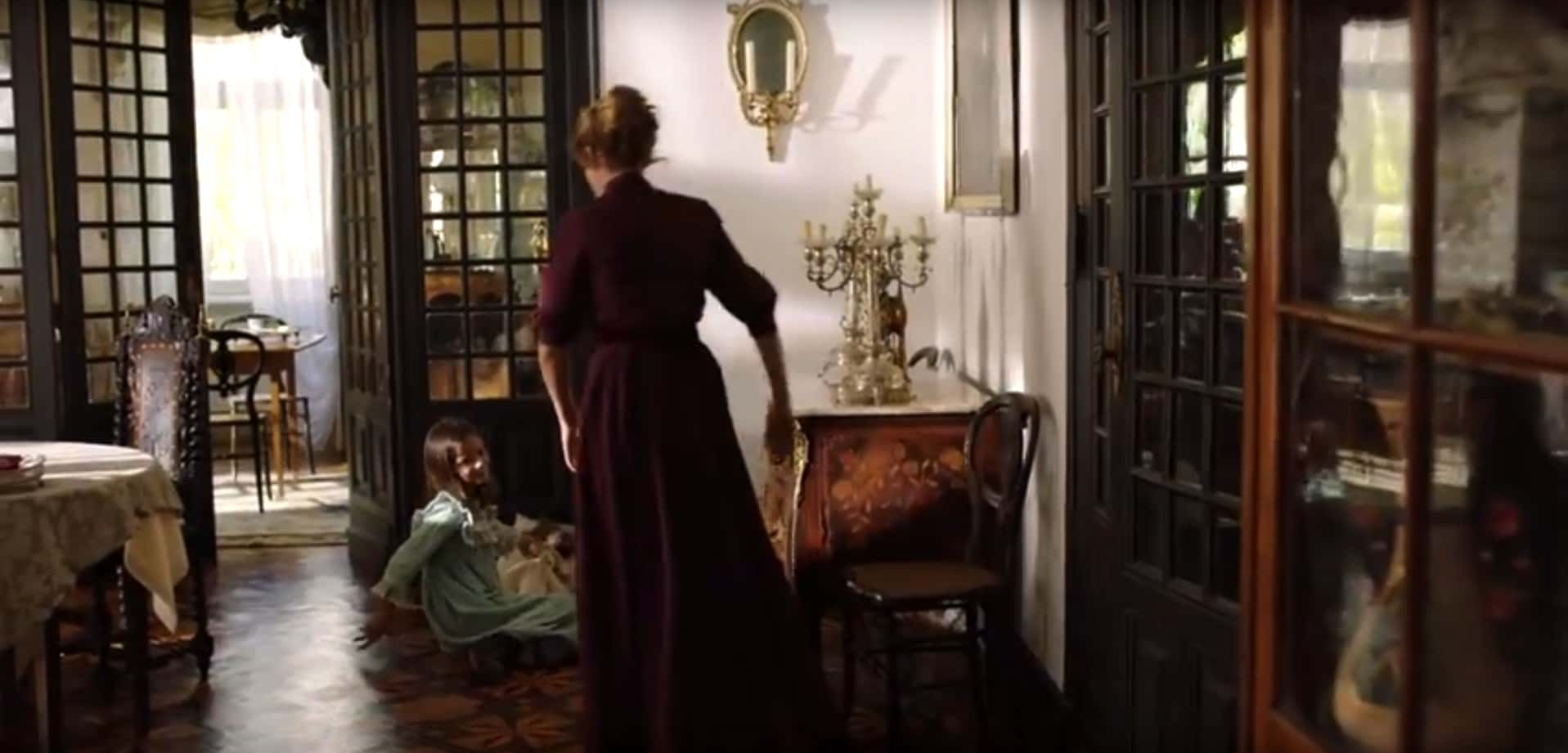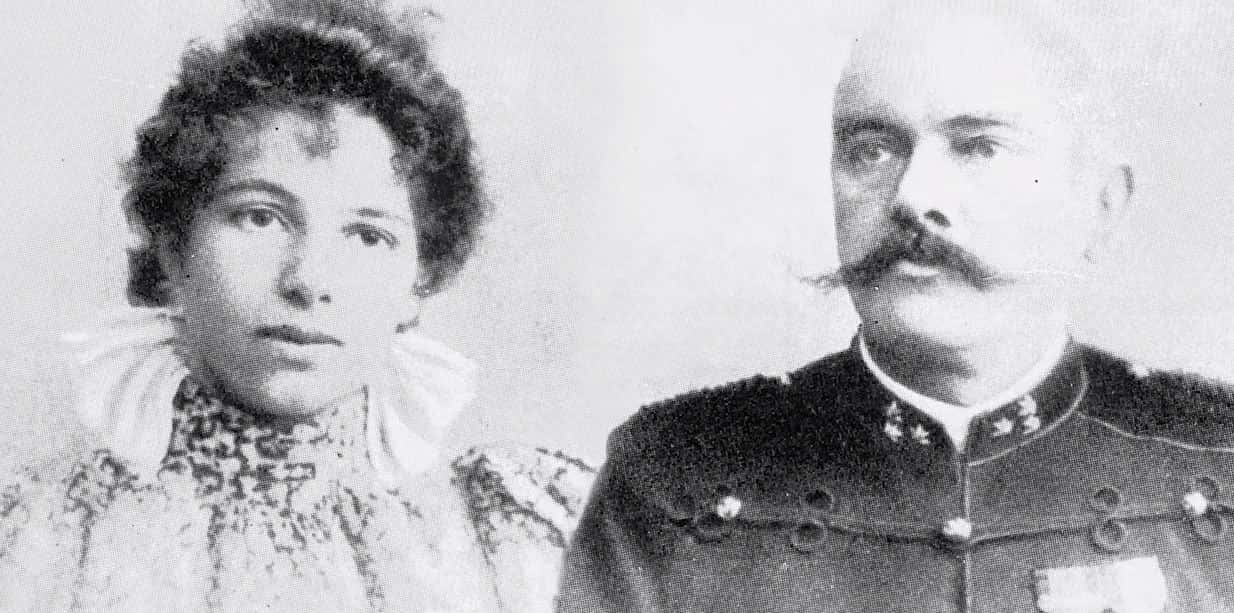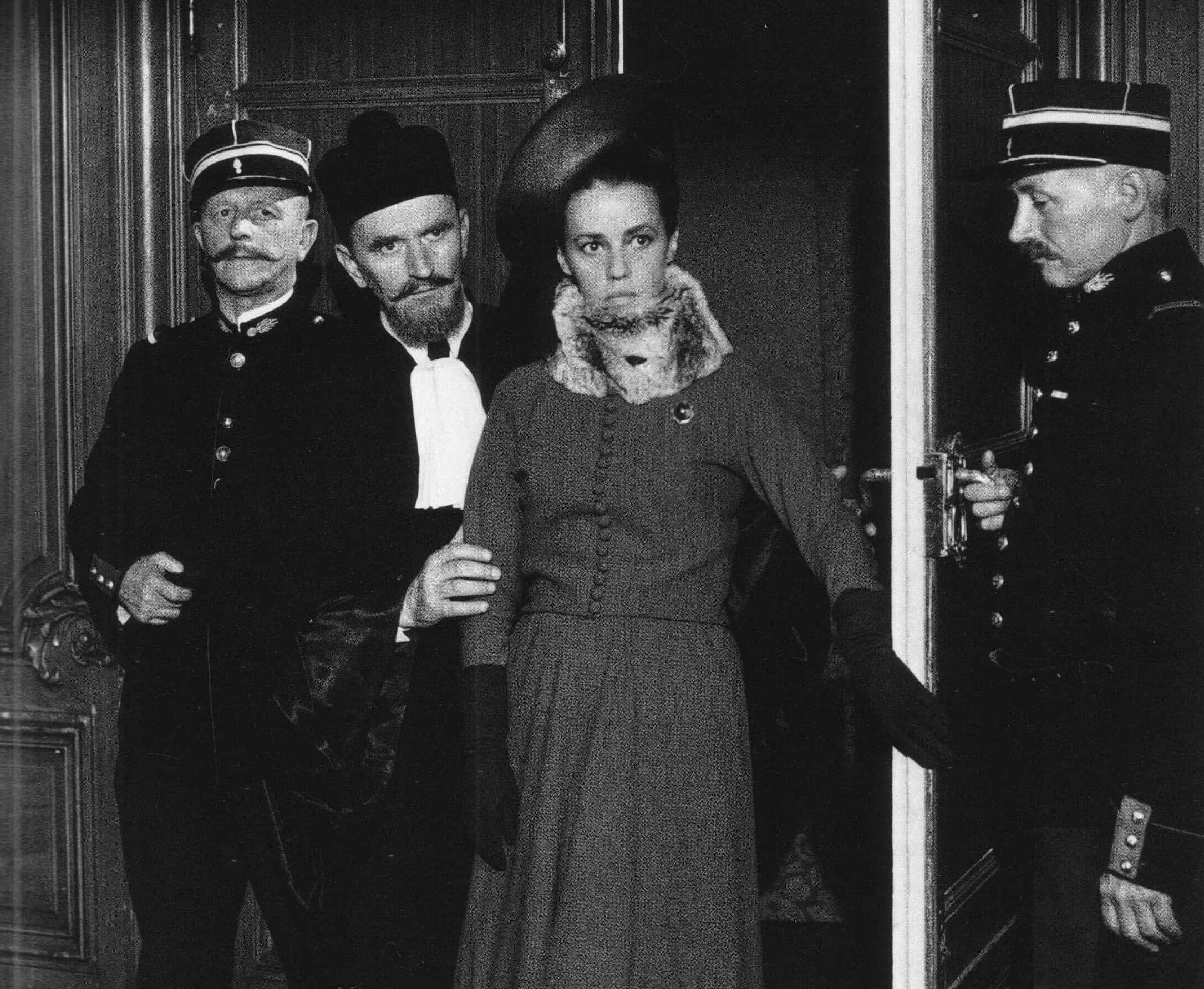"I had long since lost any illusion of being loved for who I was and now accepted, with clean conscience, flowers, flattery, and money that fed my ego and my false identity."
Mata Hari is one of history's ultimate femme fatales. She had become famous for her dancing and her seductive nature, only to be executed by the French during WWI for being a double agent. Her role in history is dubious, and her story is embedded in the world of espionage during a time when the world was embroiled in one of the most devastating wars in human history. She’s been portrayed, referenced and parodied several times throughout the history of pop culture, but beneath all those layers, what do we know about her? Where did she come from, and did she really do everything she was accused of? Read these facts to find out more this infamous seductress.
Mata Hari Facts
43. Preserved as Antiquity
The house where Mata Hari was born remained standing for a considerable amount of time until it was destroyed by a fire in 2013. However, a statue of her still stands in her hometown Leeuwarden, near the former address of her birthplace.
42. We All Start Somewhere
Mata Hari was born Margaretha Zelle on the 7th of August 1876 in the Dutch city of Leeuwarden. She was the only daughter of four children born to Adam Zelle and Antje van der Meulen.
41. Romance was Different Back Then
When Mata Hari was 18 years old she read an advertisement in the newspaper placed by a man seeking a wife. Rudolf MacLeod was a Dutch Colonial Army Captain who was stationed in what is now Indonesia (this was back when it was called the Dutch East Indies). Mata Hari responded to the ad, eventually marrying MacLeod in 1895.

40. What’s in a Name?
The name "Mata Hari" means "sun" in the Malay language. She gave herself this stage name when she joined a dance company while living in Indonesia.
39. Living Large
Hari’s childhood was initially very affluent thanks to the fact that her father not only owned a successful hat shop, but he also invested his money into the oil industry. Thanks to that, Hari was given private schooling until she was 13. You know what they say, there's money in hats and oil (maybe mostly in oil).
 Youtube
Youtube
38. It All Comes Crashing Down
Sadly, this wealth was not to last. Hari’s father went bankrupt in 1889, and then her parents divorced. On top of all that, Hari’s mother passed away in 1891. Safe to say that this part of Hari’s life wasn’t looked back on with much fondness.
 Pinterest
Pinterest
37. Just Donate Some DNA to Find Out!
For a long time, it was claimed that Hari had been of Javanese or Indonesian descent, which only added to her "exotic" mystique—something that Hari herself did little to refute. However, this claim has been refuted by historians, who have determined that both of Hari's parents were Dutch.
36. From House to House
Sadly, Hari’s family troubles only continued after her mother’s death. Her father got remarried in 1893 to Susanna Catharina ten Hoove, but this didn’t stop the family from splitting apart. Hari would move in with her godfather in the Dutch town of Sneek.
35. How Dare You!
When she was still a young woman, Hari initially trained to be a kindergarten teacher in Leiden. However, this came to a halt when the kindergarten’s headmaster began flirting with her. Upset about the situation, Hari’s godfather arranged for her to be removed from her position. This led to her leaving Leiden for The Hague, where her uncle lived.
34. Marriage Made in Hell
Sadly, Hari’s life with MacLeod was nothing short of disastrous. Moving to Indonesia in 1897, the couple’s happiness was short-lived. MacLeod was a raging alcoholic and was violent towards Hari. Not only that, he openly kept a concubine alongside his wife. One could argue that MacLeod seemed to have been on a mission to be the worst husband ever.
 Youtube
Youtube
33. Selling a Story
After her time in Indonesia, during which she heavily studied the indigenous culture, Hari would appropriate said culture when she began her career as an exotic dancer in the 1900s. She would pose as a Hindu princess from Java who’d been trained in these dances from her childhood.
 Youtube
Youtube
32. Rubies and Pearls
Reportedly, Hari was self-conscious about her small bust, especially given the line of work she had embraced. As a result, she would rarely allow herself to be seen in public without a bra. Even during her raciest pictures or dance routines, she would keep her bra on, even if she took off everything else. In keeping with her exotic backstory, as well as her incredible fame as a dancer, those bras were often decked out in jewelry.
31. Sunrise, Sunset
Eventually, Hari had a falling-out with her husband in Indonesia. After temporarily coming back to him, Hari and MacLeod would eventually separate in 1902 when they moved back to the Netherlands. The divorce was finalized in 1906, with MacLeod failing to pay support for his wife and their daughter. Based on what we know about him, not exactly surprising.
30. Poor Progeny
Speaking of that daughter, Hari and MacLeod would have two children during their marriage. Norman-John was born in 1897 and Louise Jeanne was born in 1898. Sadly, the children were both struck down with illness in 1899, which led to Norman-John’s premature death at only two years old.
29. Mysterious Circumstances
To this day, nobody is entirely sure what caused the children's illness. Some sources claim that they were “violently ill from complications relating to the treatment of syphilis contracted from their parents.” Others, including the family themselves, maintained that the children were victims of a poisoning attempt, whether it was by a servant or one of MacLeod’s enemies (but whoever heard of a violent drunk having enemies? Right?).
28. A Surname and Nothing Else
In 1903, Hari moved to Paris to make some kind of living. She started out riding horses for a circus and moonlighting as an art model. During this time, she went by the stage name "Lady MacLeod," a move which allegedly didn’t please her husband or in-laws. Though given all that she’d had to endure in her marriage, we’re not necessarily going to condemn her for hurting their feelings, though.
27. Sugar Daddy
During Hari’s time as an exotic dancer, she became the mistress of Émile Étienne Guimet. Guimet was an industrialist in Lyon who also happened to be a millionaire. To be honest, we can hardly blame Hari for seeking some kind of financial stability after a lifetime of constantly being unsure where her next meal was coming from.
26. Immortalized in Museums
In Leeuwarden, the Frisian Museum has a “Mata Hari Room” which contains two personal scrapbooks that Hari herself used and compiled. Not only that, the Museum of Friesland opened their own Mata Hari exhibition in 2017, one hundred years after her execution. It is purportedly the largest exhibition ever made about Hari’s life.
25. Respectable Representation
In the early 1900s, Hari acquired a booking agent for herself as she got into the world of exotic dancing. Gabriel Astruc was a jack-of-all-trades, working as a journalist, playwright, theatre manager, promoter, in addition to his job as an agent. Astruc spent more than 10 years working with Hari until around 1915.
24. A Lady’s Adventure
Hari’s reputation as a free-thinking bohemian was further enforced by her various relationships with men of political or military power. These relationships led her to travel around Europe on the arm of one figure or another, wowing people with her seductive style. This was the beginning of her time as a courtesan to the rich and powerful.
23. Oh That Pesky War…
This traveling around Europe didn’t stop when the First World War was declared. The Netherlands was neutral during the conflict, which meant that Hari, a Dutch citizen, only needed to avoid the battlefields to continue her travels as she pleased. However, this would prove more complicated than she probably expected.
22. Did She Get an Oscar Nom for Playing Me?
The idea of an exotic dancer also serving as a spy turned out to be far too enthralling to pass up, and Hari’s life has proved inspirational to the world of storytelling. Her life has been adapted into several films, including a 1931 film starring Greta Garbo in the lead role.
21. Conquering Broadway
Not only that, Hari’s life has inspired no less than five different stage musicals, originating in Canada, the United States, the United Kingdom, and South Korea. One cannot deny Hari’s long-lasting place in world history!
20. All’s Cruel in War
Of all the men with whom Hari is said to have had an intimate relationship, the one she described as the love of her life was Captain Vadim Maslov. In 1916, Maslov was part of the 50,000-man Russian Expeditionary Force who joined the Western Front. As a pilot, Maslov was shot down while fighting the Germans. Among his many horrific injuries, Maslov was blinded in the crash.
19. Deal with the Devil
When she heard about her wounded lover, Hari wanted to go visit him, but her status as the citizen of a neutral country blocked her way. However, France’s military intelligence agency at the time, known as the Deuxième Bureau, approached Hari and offered her the chance to see Maslov on the condition that she visit the Crown Prince of Germany (for whom she’d danced privately several times prior to the First World War) and seduce him to get military information that only the son of Kaiser Wilhelm II would know.
18. Who’s the Unfit Parent?!
As mentioned before, Hari’s husband refused to support her, even though she was dealing with full custody of their daughter, Louise Jeanne. In one incident, Louise Jeanne was visiting her father when MacLeod straight up refused to bring her back to Hari! At the time, Hari was unable to fight against this situation, and she allegedly conceded that MacLeod was at least a better father than he’d been a husband (though that isn’t saying much), so she didn't fight him to get Louise Jeanne back. It didn’t help that MacLeod unfairly used her status as an exotic dancer against her as a parent (something which people unfortunately still do to this day).
 Youtube
Youtube
17. Taken Too Young
Hari’s daughter, Louise Jeanne, sadly did not have a long life. She died at the age of 21 in 1919, just two years after her mother’s execution. According to some sources, her death was a result of syphilis, though it's hard to say for sure.
16. As Long as It’s Worthwhile
The irony of Hari being bribed with visitation rights (and, allegedly, one million francs) to get German military information from the Crown Prince was that he had next to nothing to do with how the German military fought the First World War! He was simply a figurehead who’d been given a great PR campaign by German propaganda, and the French had bought into it so much that they were apparently willing to work with one of the most famous courtesans of Europe to trick information from him!
15. And the Noses Started to Turn Upwards
As can be expected with any successful fad or trend, a backlash against Hari built up momentum around 1910. Despite her success bringing a veneer of class to the art of exotic dancing, some social circles began to criticize her for cheaply using her body rather than possessing any genuine dancing talent.
14. Dancing Denouement
It was partly this negative reception from the more elite cultural establishments which caused Hari’s career as an exotic dancer to stall after 1912. What also didn’t help was that she was showing her age, which sadly caused audiences to lose interest. Hari’s final performance as an exotic dancer on the 13th of March 1915, though by then she’d already begun a transition to the role of courtesan anyway.
 YouTube
YouTube
13. Unlucky Number
As you may have noticed, the number 13 was a very significant number which kept coming back to Hari throughout her life. Not only did she have her big break performance on the 13th of March 1905 (and her final performance on the same day ten years later), Hari was also arrested by French authorities for double espionage on the 13th of February, 1917. Moreover, her father died on the 13th of March, 1910.
12. The Great Escape
Allegedly, Hari spent her time in prison coming up with three different escape plans. One of them involved a doctor claiming that she was pregnant, which would delay her execution for nine months. Another plan involved bribing the firing squad to use blanks, bury Hari in a shallow grave, and then have her being dug up and smuggled out. As you can guess, none of the plans were carried out before she was executed.
11. What a Woman!
From her debut at the Musée Guimet on the 13th of March 1905, Hari was an overnight success as an exotic dancer. It benefited her that her act embraced an eastern influence, which was becoming a trend at the time (the trend was dubbed "Orientalism" by contemporary writers). And since the Dutch East Indies weren’t a familiar place to the people of Paris, her exotic story of being a part-Asian princess was eaten up hook, line, and sinker. Putting on a seductive, playful persona who cheerfully paraded her body for risqué photographs, Hari also took audiences by storm. Not bad for someone who had begun a dancing career at 29!
10. Mysterious Motivation
It’s still not known why Hari approached German agents and offered to provide information on the French. Some argue that she did it out of simple greed, while others say that she was still trying to get access to the Crown Prince, as she’d been told to do by French intelligence.
9. Blood on Your Hands!
At her trial, Hari was accused of double espionage resulting in the deaths of no fewer than 50,000 soldiers! For her part, the most famous phrase attributed to Hari during her trial was the response “A harlot? Yes, but a traitor, never!” Sadly, that defense didn’t save her from being sentenced to death.
8. A Broken Woman
Hari continually maintained her innocence during her imprisonment, trial, and execution. She pleaded with the Dutch ambassador in Paris that she was being wrongfully tried (in later years, a case was made saying that Hari was a scapegoat being used by the German and French governments to their own ends).
7. Not-So-Confidential
In January 1917, the Deuxième Bureau intercepted and decoded a series of messages sent by German intelligence. The messages discussed the actions of a spy who was identified only as H-21, but the information on H-21 was such a mirror image of Hari’s personal life that it wasn’t hard for the French to put two and two together.
6. Accident or Antagonistic?
Given how quickly the French were able to gauge the identity of Hari based on those German messages, and given that the Germans were using a code which they fully knew had already been cracked by the French, it’s widely believed that Hari’s identity as a double agent was intentionally revealed by the Germans.
5. A Simple Pink Slip Would Have Been Nice…
One reason that the Germans may have blown her cover was the fact that Hari hadn’t actually given the Germans any information which they could use. Her intel on the French supposedly consisted of nothing but gossip on the sex lives of politicians and generals. In frustration, General Walter Nicolai of the German Army Intelligence purposefully exposed her double espionage to the French as the most aggressive and hateful “You’re fired” in human history.
4. Lost Lover
In a terrible twist, her blinded lover, Captain Maslov was evidently no longer interested in her and refused to testify on her behalf. Hari was supposedly so devastated at this betrayal by the man who had inspired her espionage in the first place that she fainted upon being told of his changed attitude.
3. This Is the End
Hari’s execution took place on the on the 15th of October 1917 (just two days away from being another important 13th day!). According to the testimony of journalist Henry Wales, Hari refused to be blindfolded as she faced the firing squad who were about to take her life. She did not flinch as the soldiers opened fire, and even after she’d been struck, her face did not change expression. Unfortunately, for those who want a juicier story, Wales doesn’t mention anything about her supposedly stripping down to her birthday suit to persuade the soldiers not to shoot her (as some sources have stated she did). She did, however, blow a kiss to her executioners in her final moments.
 Derpibooru
Derpibooru
2. Back Off, Frankenstein
After her death, Hari’s body was reportedly used for medical research. We’d like to hope that she’d been allowed to sign proper documentation to give her permission for these actions beforehand.
1. Don’t Lose Your Head
In a rather disturbing twist, Hari’s head was severed from her body, embalmed, and preserved in Paris’ Museum of Anatomy. However, in 2000, it was uncovered that her head was missing, and it may have been missing as far back as 1954 without anyone noticing! The reason for this strange misplacement was given as the museum’s relocation in 1954. It remains missing to this day.















































